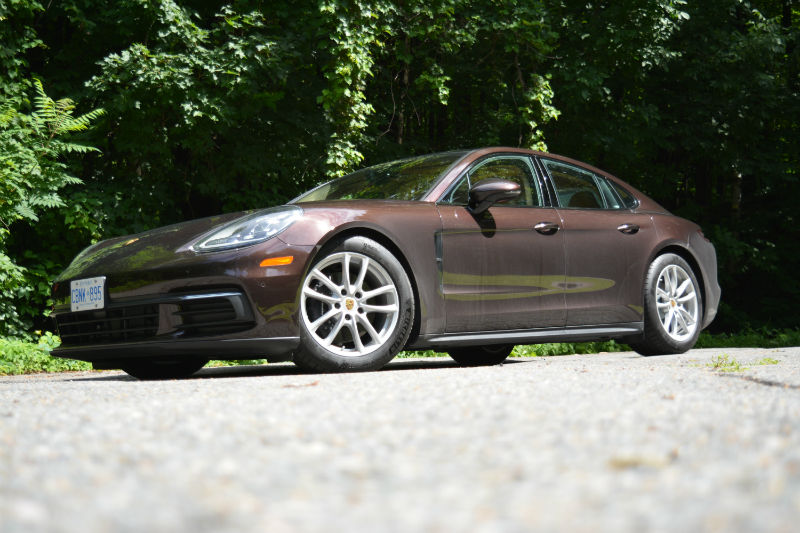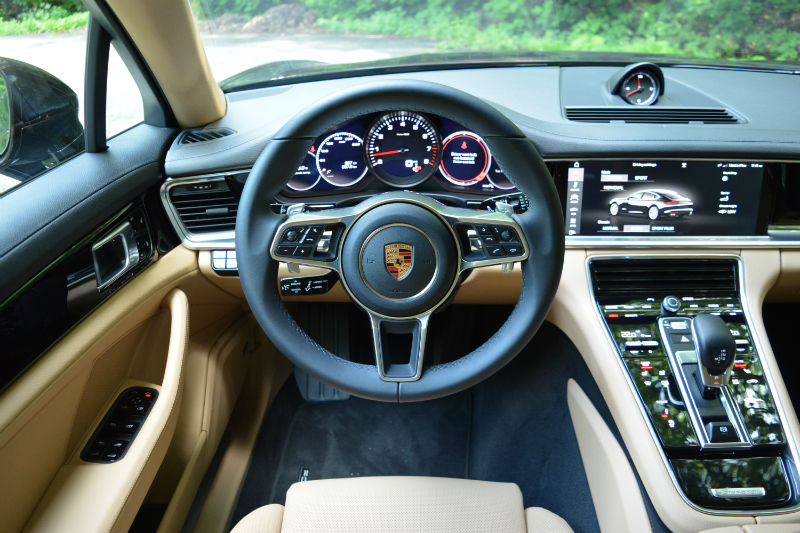Scaling back about 20 years, Porsche seemed like a one-trick pony. It made 2-door sports cars and depending on the period, they had engines up front, in the middle or the rear. What did they know about SUVs or sedans at the time? You all know the Cayenne and now Macan stories but what about the brand’s first mass production sedan?
In the late 80s, Porsche created the 989 Prototype which essentially looked like a taller stretched 911 from the era. Evidently, it was never produced so Porsche never really learned much from the project. But then, for the 2010 model year, they unleashed the Panamera which was greeted with equal parts enthusiasm and um, displeasure due to its styling. Despite the naysayers, the saloon soon took off, outselling the Cayman and Boxster depending on the year and quickly taking its place alongside the Mercedes S-Class, Audi A8 and BMW 7 Series as a highly competitive and sporty alternative.
For this year, Porsche’s returned with a new Panamera now closer in character to the S-Class but without ignoring its roots. The small gap that existed between the two is now almost nil. Will this hurt or improve the big Porsche’s appeal? Currently tied in second place in sales year-to-date within its segment, I think it will do better than ever.
Styling inside/out
The new Panamera now more than ever looks like a Porsche. The previous car was a Porsche but was stylistically very different from the others, including the Cayenne. Now, the brand’s entire line-up is cohesive with a general unifying allure.
From the front, the car borrows from the 911 and 918 and the rear is nearly all 911. The flowing roofline is less prominent than the old car, endowing the new Panamera with a more coupe-like profile. The Sedan is nice however, for me, it’s Sport Turismo all the way.
Despite the car’s wheelbase being 30mm longer, it almost seems shorter thanks to sharper proportions and sleeker front and rear overhangs. Even with a keen eye, the differences between the base car and the Turbo is not so obvious to pinpoint especially given the fact that Turbo wheels are an option on the base. This is the only mildly negative comment I have against my tester. Any of the 20” wheels would have raised the visual stakes of my Mahogany Metallic unit.
Comfort/space
The completely restyled interior is a 21st Century approach to what was Porsche’s very contemporary cabin layout. The center console takes precedence, as it did, but this time carries a uniform glossy surface with touch-sensitive commands that is lovely but not as intuitive as the old flowing series of buttons. The design is premium high-end stuff much like the seats, both front and rear.
The 14-way power front perches are exemplary in their form and function while at the rear, two passengers take place with a full array of controls through a large screen at their disposal. There truly is no bad seat in this house. The aforementioned extended wheelbase allows for more room for utmost wellbeing while the trunk will swallow loads of gear.
What really impresses is the car’s overall class, now on par or better with all of its competitors. The isolation from the outside world is nearly complete with NVH levels at an all-time low. This is now a genuinely luxurious sports saloon.
Value/equipment
The new Panamera starts the pricing party at $97,300. The Panamera 4 requires an extra $5,200 and the sky’s the limit from there. My $116,500 tester included what I believe to be the most important options, namely the $7,140 Premium Package Plus which consists of soft close doors (ideal for when baby’s sleeping the car), rear heated seats, 14-way power front seats with ventilation, and a sweet BOSE sound system. And let’s not forget the 4-zone automatic climate control with touchscreen display. It’s crazy to think anyone would need more, but there’s so much more than can be added.
Porsche’s Communication Management system, or PCM, is standard and the central nerve center for all things technology and communication in the new Panamera. Through the gorgeous 12” touchscreen, all manners of navigation, audio and more can be accessed. The display can be busy but the presentation is hypnotizingly beautiful so it’s a perfect excuse to stare. Then there’s the Porsche Advanced Cockpit which is the legendary 5-gauge cluster’s modern interpretation with screens on either side of the analog tachometer.
Powertrain/handling
It’s crazy to think that 330 horsepower sounds like too little for a sport luxury sedan nowadays. On paper, it reads like 29 more hp than a V6 2018 Toyota Camry but this Porsche is more about putting the numbers to work.
The twin-turbocharged 3.0-litre V6 also generates 331 lb.-ft. of torque from 1,340 to 4,900 rpm, which makes all the difference, as does the new 8-speed Porsche Doppelkupplung (PDK) transmission. A PDK is a lightning-fast means to power all four drive wheels, in this case, with nary a disruption to the flow of power. The first six speeds are tightly geared permitting this 1,850 kg (4,070 lbs.) car to reach 100 km/h in only 5.5 seconds. The trick is that the Panamera 4 feels much quicker than the numbers indicate. Gears 7 and 8 are overdrives keeping engines revs very low at highway speeds for both general comfort and excellent fuel economy. If you can keep your right foot off the firewall, you’ll manage 9L/100km with little effort.
This Panamera’s ride quality and refinement are so good that, although it shouldn’t be, they are unexpected. Among the musts for this car is the Adaptive Air Suspension including Porsche Active Suspension Management or PASM. The adaptive dampers can be set in one of three modes (Normal, Sport and Sport+) but I find that 95% of the time, Normal is the best setting. This, coupled to the Adaptive air suspension fashion a zero-compromise drive that will give the driver loads of grip all the while preventing nasty road surfaces from disturbing the peace.
A Porsche staple are brakes. Even with the standard 4-wheel steel vented discs (six-piston fixed calipers up front, four-piston rear), the Panamera has massive stopping power.
In this segment, one car stands the tallest volume-wise and it is the Tesla Model S. Then comes the Mercedes, the BMW and the Panamera. The Lexus LS, Caddy CT6 and Audi A8 are not in the running where sales numbers are concerned. The new Porsche’s volume is growing steadily so far this year, only a few units behind the Bimmer. With what Porsche has put together, in other words a compellingly luxurious and enjoyable car to drive, the results do and will speak volumes. And for those looking to make a real statement, there’s that new Sport Turismo. Make mine a Turbo Sport Turismo.
Review Overview
Performance - 90%
Driving Experience - 90%
Comfort - 95%
Security - 90%
Interior Design - 95%
Prestige - 95%
93%
 Woman And Wheels Automotive website dedicated to women
Woman And Wheels Automotive website dedicated to women






































